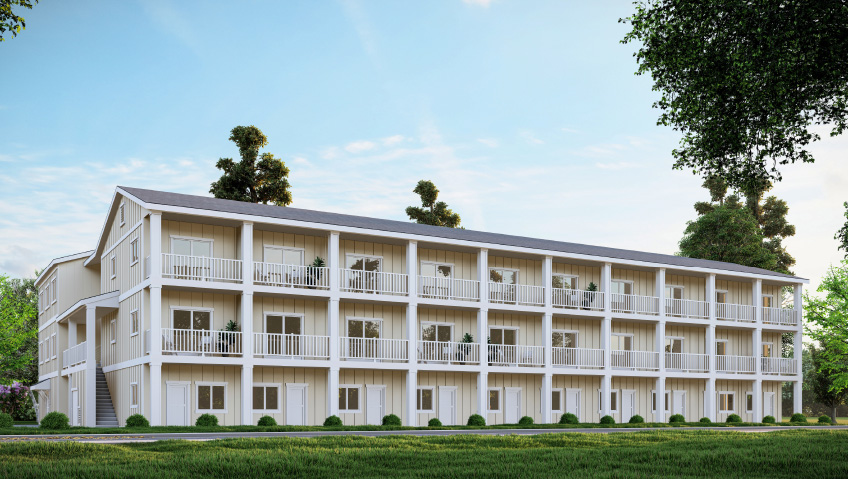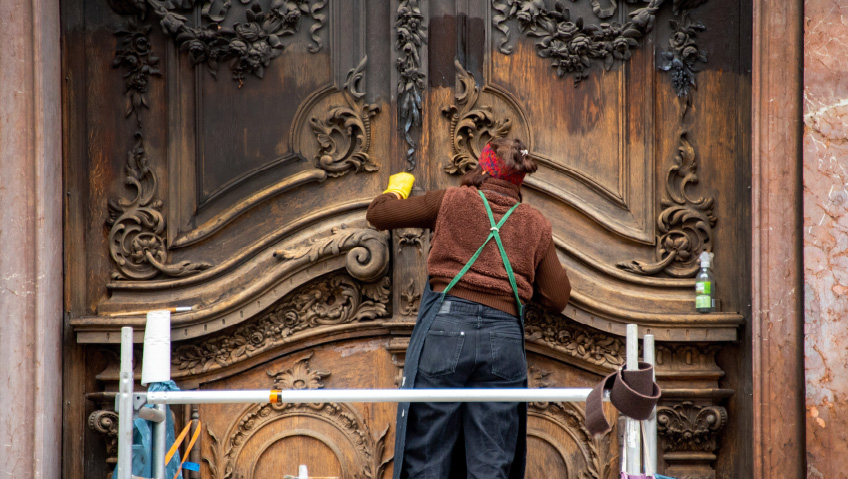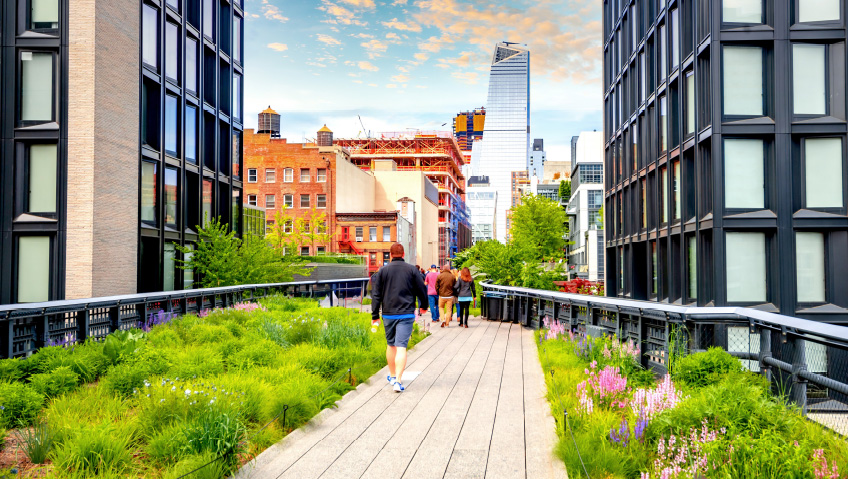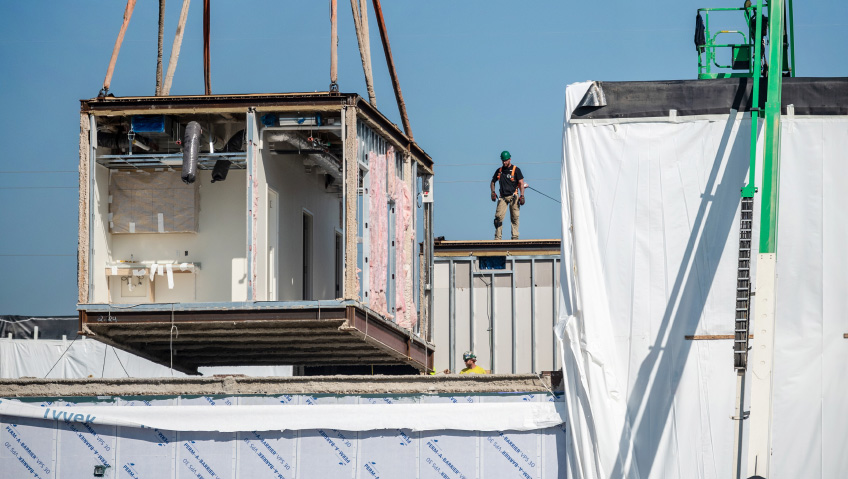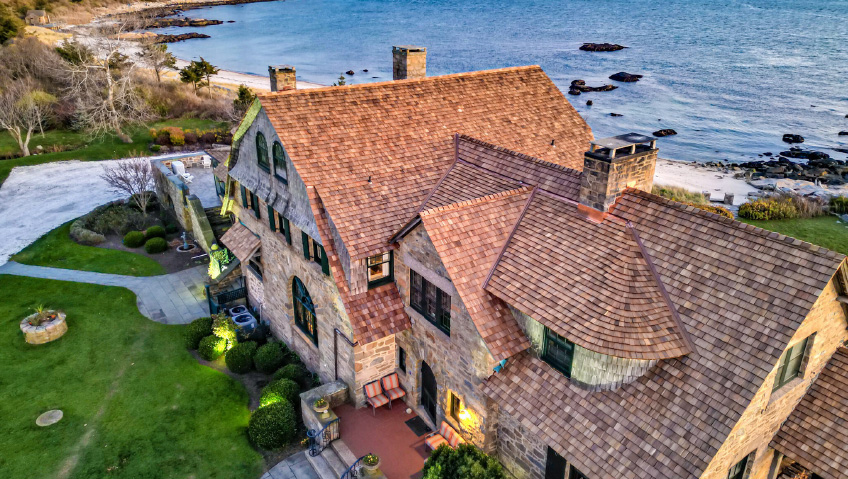As a founder and owner of multiple successful companies, and with a career spanning over two decades in housing, architecture, and engineering, Dan Ferreira has learned a lot about scaling up a company. This culminated in his founding Anderson, California-based modular builder US-Offsite in 2018. Starting production in 2023, US-Offsite has expanded operations at a sensible pace and has its eye on future growth.
“The company has doubled in size in the last year—doubled in headcount and doubled in production,” says Ferreira, the company’s Chief Executive Officer. “And we’ve doubled the footprint.” Starting with a 20,000-square-foot facility, US-Offsite is now close to capacity at its current location, and is building a 220,000-square-foot plant set for completion at the end of 2026. At present, US-Offsite can complete 16 to 24 modules per month; once the new mega plant is built, the company will increase production up to 80 modules a month.
“It’s a long process, and we are actively working on it,” adds the company’s Vice President of Operations, Josh Kaeber. “We have a backlog now where we need to have that facility come online.”
For Ferreira and Kaeber, expanding US-Offsite at the right speed is a testament to the company’s leadership. Ferreira has seen other modular builders invest millions of dollars in a large facility at the start—and then bleed cash for years. Using his business knowhow, US-Offsite’s CEO took the opposite approach, one that is paying off for the company and its customers.
“That’s kind of the story of modular,” comments Ferreira. “What we did is we built a small factory, and then we built a bigger one. Now we are on our third version, and we’re building a large one, so we are stair-stepping up, trying to build healthy habits on the way. We are approaching it differently than the other players in the market… we are doing it one step at a time.”
Expanding from its original 20,000-square-foot facility to its current 65,000-square-foot location on the same campus required careful planning to ensure not only enough room for production but also space for storage. “We have one more growth stage to undertake in the facility we are in, so we probably have another dozen hires to do in the next four months or so,” Ferreira shares. “The new plant will be one of the largest purpose-built volumetric modular plants in California.” To further set up the company for success, US-Offsite owns the land, permits are in place, and all the infrastructure is complete. “We’ve already spent $5 million on it, so we are going to do the next $25 million and put the building physically up.”
US-Offsite has grown both in size and in numbers and today, the company has 65 employees—16 individuals in the office and the others in production. One of the company’s greatest points of pride is giving people who want to work the opportunity to better their lives and the lives of their families. This includes hiring men and women with backgrounds of homelessness, incarceration, and rehabilitation programs. One recent hire is a young man who is still in juvenile detention, who works at US-Offsite during the day and returns to the detention facility in the evening.
“We have six individuals with a background of homelessness that we hired within the last year,” says Kaeber. “Overall, it has been a great success. We’ve definitely had challenges, but they are some of the best employees we have, and they really appreciate the opportunity. We have some good resources here in the county, and we work with them.”
“We have an impetus on vertical movement, so whether you come in white collar or straight out of incarceration—and we welcome both—we have a structure to grow everybody we hire,” agrees Ferreira. “We probably have half a dozen people that have entered our workforce through highly recommended, trusted advocates, and they are out of a rehabilitation program of one type or another, be it narcotics, alcohol, or incarceration. And those guys are some of our best team members, because they are so grounded and hungry to learn, and they just take off like a rocket.” To ensure future success, US-Offsite encourages a robust and supportive teaching environment, providing structure and training.
“That’s the heart we have here, is to grow people and give them a second chance,” says Ferreira. “We also have a lot of incredibly skilled craftsmen who anchor the whole teaching environment, so it’s a combination [of mentors and mentees].”
All new US-Offsite employees have a mentor and a growth plan, and get monthly one-on-one check-ins to measure their progress. “There’s a proactive structure to growing people, their skills, and their leadership abilities from day one,” Ferreira says. “We’ve discovered that people’s enjoyment, happiness, and contentment is really built on the rate of growth. You don’t have to earn a huge salary to be happy; you just have to feel you are making momentum in that direction at a quick enough rate. If you are progressing in life, you are usually pretty satisfied. The goal is to get people moving, up-scaling, training, getting promotions, and putting everybody on track. So if you want to come and be stagnant, it’s not the right place for you. But if you want active coaching to grow, that’s how we do it.” The company is also building relationships with the local community college and area high schools to bring in summer interns and help boost the industry as a whole.
Most of the company’s projects are multi-story/multi-family, with five stories being the limit for wood structures in California. There are many advantages to using wood over other materials, as factory-made wooden buildings are transported to the site with no wasted materials. Trucking fuel costs are much lower than in traditional construction, and there are far fewer resulting emissions. And with modular building, everything has its place and the work can always get done, even in terrible weather or other challenging conditions.
Then there is cost to consider; using primarily 2” x 6” and 2” x 12” wood is at least 20 to 30 percent less expensive than steel, an opportunity to save on costs amidst soaring housing prices.
Some of the company’s ongoing projects include a 39-module, 26-unit, three-story workforce housing project; a townhome project comprising eight two-story, two-module buildings; an interim housing campus featuring four single-story buildings of six modules each; and six single-story, single-module hospitality cabins in Montana.
Other recent achievements for US-Offsite include a California-based high school expansion project. Consisting of 10 modules, four classrooms, and one office building, the onsite work was completed in record time, just 26 days. The contract was signed around Christmas 2024, and it went to design and permitting. Building began in March, the expansion was installed in June, finished in July, and occupied in time for the school year. Another project completed in a short timeframe was a temporary emergency shelter comprising 32 modules, 72 beds, and single-story, single-module buildings. “We are definitely doing some better-sized projects now, and growing to scale,” Kaeber says.
Ferreira points out that US-Offsite isn’t a developer but builds for developers. The State of California, and several surrounding states, has a program under which the company operates “which is very friendly to getting things done,” he says. “The State itself embraces modular very well and has a pre-expedited process for us.”
One of the newest features of the company is its contracting arm. “If projects are what we call medium or small—under 50 units—we will do all the transport, shipping, all the crane setting, and we’ll often do the complete build on site as well, including foundations, infrastructure, underground works, and finishing the units once they are set. So we had several projects last year that were completely turnkey under our contracting arm, and we have several where we are doing the shipping and setting for other general contractors. The big point to make is, we are not just a factory, and we are filling all those roles to make it easy for the contractor/developer,” says Ferreira.
In addition, US-Offsite has its own project management team and shipping and logistics team. “For the developer or general contractor, it’s just one seamless delivery.”
By integrating all these services, the company provides customers with a complete package. “Whether it’s us alone or with another entity, like a general contractor, we are going to make an integrated delivery out of this and get it all synced up. ‘An integrated team’ is sort of our mantra now, and we are committed to that on every front. This includes shipping, setting, and financing via lenders we partner with. We are trying to make this whole value chain work really smoothly.”
At present, US-Offsite will work as far south as San Diego and is shipping products to Montana. “We usually say Seattle to San Diego, the whole Western seaboard, but we have projects going all the way up to Montana,” says Ferreira.
“We will get our large facility built and move into that by the end of 2026,” says Ferreira, “and we’ve basically set the next three years maxing out the capacity there. The next big threshold for us will be maxed capacity in the large facility; that would be 200 employees producing a thousand housing units a year, about 1,000,000 square feet of housing. That’s the benchmark we are aiming at, and that’s well within a five-year horizon.”

